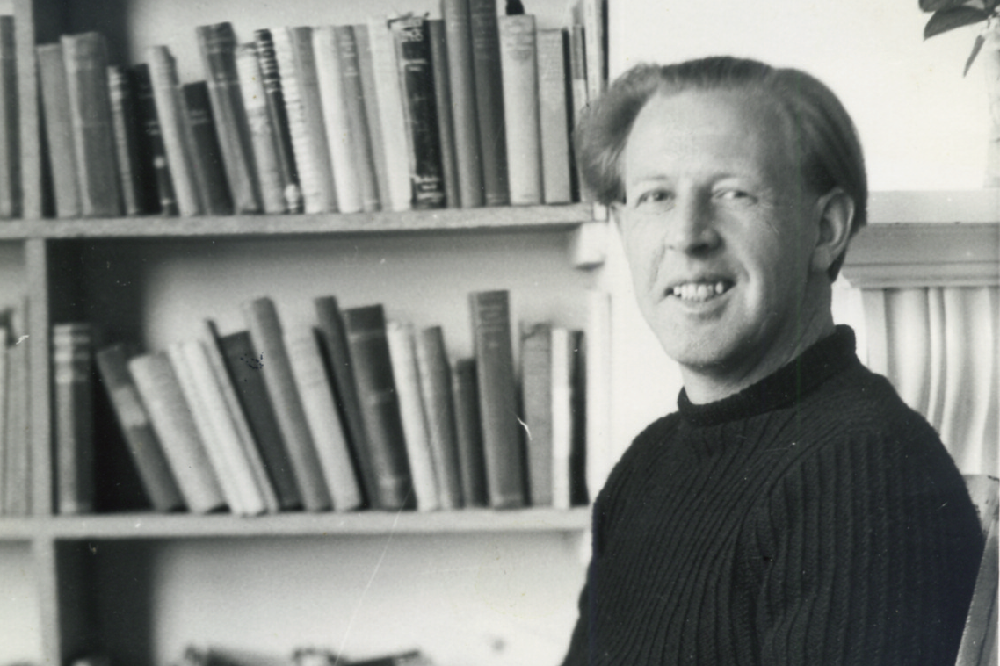Raymond Williams: In and Beyond Wales

In the latest of our articles to mark Raymond Williams’ centenary, Stephen Woodhams, editor of the new collection Raymond Williams: From Wales to The World, writes about the enduring impact of William’s work.
Stephen Woodhams
Raymond Williams has never been a figure easy to fit in to a pre-existing mould. His childhood on the border of Wales with England meant he was not of the heart of Welsh speaking Cymru, indeed in his home village of Pandy, the language of the country to the east, had for some time been more usually spoken. Further, though rural at first glance, Pandy was connected by railway to industrial centres south and east and, around the train station, had its own nucleus of a working class. That he went on to be a public intellectual connected to elite institutions, certainly breaks any mould that a child of his upbringing might be expected to fit to.
Raymond Williams, in the terms set by some at least, simply did not add up. That he went on defying the assumptions of others, for instance at Cambridge where his presence was far from universally accepted, became almost a hallmark of the man. The secure base afforded by his childhood however made for a tough core even where outwardly he was never less than courteous.
The biography of Raymond Williams which intricately weaves the story of his life from before birth to that point where his impact was being more widely felt, made writing and editing Raymond Williams From Wales to the World possible. Raymond Williams A Warrior’s Tale by the authorised biographer Dai Smith, is the place from which any engagement with the full expanse of Williams’ life and work must start. For me, while knowing the broad canvas of Williams’ background, Dai Smith’s biography provided essential personal details, such as the genuinely extra-ordinary experiences following the Normandy landings in 1944, with often vivid colour and shade.
Caution
Where Dai Smith had shown proper caution in setting down the background to Williams’ life, Raymond Williams From Wales to the World stretches the history back over a long time-scale. Raymond Williams is situated by some two hundred years of a Cymru culture where Dissent both religious and secular were trademarks of a people who refused to conform to the dictates of Minister, schoolteacher, landlord or boss.
Instead was created a Dissenting culture where people expressed themselves through their own learning and expression, whether in makeshift class, chapel, band, choir, trade union or miner’s hall and library. A rich culture where learning was prized and moving out to a world beyond to take up a new and different position, was expected. It was a theme that ran though Williams’ fiction as he struggled to find a form by which to show that movement, yet not at the expense of the working-class community where the growth started. The first and perhaps most incisive outcome of that struggle was Border Country.
Few books have become so dog eared with reading and re-reading as have more than one copy on my shelves. It is the centre piece of one chapter in From Wales to the World, as is The Fight for Manod the centre of a later chapter. Connecting the two chapters is exploration of the new historiography of modern Wales as it was produced in the 1970s at the centre of which was Llafur: The Society for the Study of Welsh Labour History
Williams’ writing displays a quality of active thinking. Absorbing that which surrounded him as much by osmosis as by more conventional means, he fashioned a unity of work whatever the form of writing. Consequently, his engagement with other writers is often unstated. Yet engagement there was as he offered his own original genius in writing that could at times be difficult to penetrate.
Qualification was a hall mark, a sentence making one point would be followed by another where that statement would be subtly amended, deepened, made more nuanced. The result might leave a reader reflecting even frustrated as they grapple to distil some more concrete conclusion suiting their own disposition. Williams it seems was not afraid to leave open what interpretation might be placed on his work. An example of this openness might be gauged from his fiction, at the end of The Fight for Manod, what will happen for the place of that name and its people is left undecided, the contending options in play.
With this openness in mind, where Williams’ work might go forward is at the heart of the last and unusual chapter of From Wales to the World. A wide range of writing and projects starting out from Williams is commented on, with particular emphasis given to visual and audio work and to online ventures. Through these forms readers may better grasp how and toward what end, Williams’ ideas have been taken and developed in diverse settings.
For myself, completing this future focused chapter affirmed the prescience of Raymond Williams to our times and beyond. He is a figure that one feels is somewhere up ahead, waiting for us to catch up and resume a conversation that will always move on one more step, one more opening.
Raymond Williams: From Wales to the World is published by Parthian and can be bought here.
Support our Nation today
For the price of a cup of coffee a month you can help us create an independent, not-for-profit, national news service for the people of Wales, by the people of Wales.





